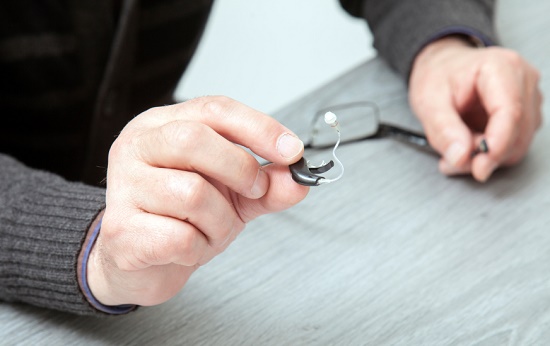
Murphy’s Law tells us that “if anything can go wrong, it will.” A better variation might be that “things will go wrong in any given situation, if you give them a chance.”
In regard to vehicle maintenance, that’s the reason we change the oil in our cars, replace the filters, and rotate the tires. We’re aiming to protect our investment and stretch out its life.
You should consider hearing aids in a similar manner. If you give things an opportunity to go wrong, they will; but if you’re proactive in your maintenance, your hearing aids can persist and perform properly for many years.
So what are the things that can go wrong? Here are the three main threats to your hearing aids and what you can do to safeguard against them.
1. Physical breakdown
Enemy # 1 is physical destruction. Hearing aids consist of vulnerable electronics that are susceptible to damage from shock. To protect against this, make sure to store your hearing aids in their storage cases whenever you’re not using them.
An effective guideline is that your hearing aids should be either in your ears or in the storage case at all times. Leaving your hearing aids unprotected on any surface is just asking for Murphy’s Law to come and bump them off. Similarly, when you’re putting in and removing your hearing aids, it’s best to do this over a soft surface in the event that they fall.
Additionally, remember to check and replace the batteries often. You’re not doing the electronics any favors by having the hearing aids work on low battery power.
2. Moisture
Electronic devices and water do not mix, which anyone who’s dropped a mobile phone in the kitchen sink knows all too well. Once underwater, there’s little that can be done. But it takes a lot less than total submersion in water to wreck your hearing aids.
Water, in the form of mist, can still work its way into the hearing aids and begin wreaking chaos. Because of this, you should avoid using hairspray, insect spray, or any other sprays while using your hearing aids. Additionally, keep in mind that radical changes in temperature can create condensation, for example going from a climate-controlled room to the outdoors. If this happens, ensure that you dry off any moisture that develops.
We also suggest not storing your hearing aids in the bathroom, as the condensation can create issues. This is an additional reason that your bedside table drawer is probably the best location to keep your hearing aids when they aren’t in use.
3. Earwax and dirt
Even if you’ve safeguarded your hearing aids against physical destruction and water with proper storage and the prevention of moisture, you’ll still have to protect against enemy # 3: dirt and grime.
Earwax, dirt, and debris can build up on the hearing aids, blocking the speakers, ports, and other parts. To guard against this, 1) sustain adequate ear hygiene, and 2) clean and sanitize your hearing aids each day.
Concerning cleaning and sanitizing your hearing aids, ensure that you use only the equipment supplied by your hearing professional. Your hearing professional can provide cleaning kits and directions specifically for your type of hearing aids.
Finally, consider investing in a hearing aid sanitizer. Sanitizers use ultraviolet light to comprehensively kill pathogens, all while supplying a safe place for storage.